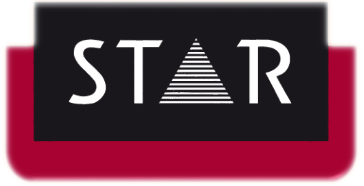Machine Translation and Transit NXT
The latest version of STAR Transit integrates with a number of Machine Translation Systems. Here’s how to make your translation faster.
1. Overview
Machine Translation (MT) systems can be used when working with Transit.
Concerning MT support, Transit strictly distinguishes between the following systems:
- Customer-specific MT systems
In Transit, customer-specific, specially trained MT systems are used exclusively for machine translations during the import of project files. Therefore, they are referred to as Import MT.
The project-specific settings for the Import MT are specified by the client or project manager on the Machine translation tab of the Project settings window .
Import MT suggestions are displayed to you as translator in the fuzzy window, together with the fuzzy matches that may exist.
- Unspecific online translation services (GoogleTranslate, iTranslate4eu)
Machine translations by online services are supported only via the Transit editor. The translator needs to request them explicitly for individual segments (see section 4. “Manually requesting a machine translation”). Therefore, they are referred to as Editor MT.
The settings for Editor MT are set by the translator using the Machine translation option of the user preferences.
2. User preferences for Editor MT
In the user preferences you can specify – independent of a project – if you want to use Editor MT. It allows you to manually or automatically request MT suggestions from online providers via the Transit editor.
How do I configure the user preferences for Editor MT?
1- Select Transit button | User preferences.
Transit displays the User preferences window.
2- Select the Machine translation option.
Transit displays the user preferences for the Machine translation option:

3- Specify the desired settings:
Allow Editor MT (request MT suggestions via context menu) – Here you can turn the use if Editor MT on or off. It allows you to request MT suggestions using the context menu of the Transit editor.
– Ask before data is sent
Here you specify when Transit should ask prompt you to confirm explicitly to send data to the MT system:
Never, Once per project or Every time
In the overview below all MT systems supported for use in the Transit editor are listed.
– The Status column displays whether the respective MT system can be used or not:
OK – The MT system can be used.
not configured – The MT system needs to be configured, i. e. the API key must be entered.
– Button 
– In the Use column, you can turn the use of an MT system on and off.
Transit can only use one MT system at the time.
– Automatically request MT suggestions
Here you can turn on and off if Transit should automatically request MT suggestions for segments for which there are only fuzzy matches at a low quality:
Only for segments with fuzzy matches lower than (%) – Here you specify the quality of the fuzzy matches (in percent) below which Transit should automatically request a machine translation for a segment.
Only for segments with at least (words) – Here you specify the quality of the fuzzy matches (in percent) below which Transit should automatically request an MRT suggestions for a segment.
Only for segments with not more than (words) – Here you can specify that the segments should have a specified minimum length (i.e. segments that are too short are not sent).
Ask before data is automatically sent – Here you specify when Transit should ask prompt you to confirm explicitly to send data automatically to the MT system:
Never or Once per project

For machine translation, if requested by the user/customer, the texts and contents that are to be translated are transferred to the machine translation (MT) system and may be transferred to the provider of the MT system. STAR has no influence on the quality of the machine translation when the data is processed and translated externally in this way. No guarantee shall be provided for the correctness or completeness of such translations.
STAR points out that the Internet is not considered to be a secure environment and data that is transferred online may be accessible by unauthorised third parties. STAR shall accept no liability for the security of any data that is transferred online. STAR shall be excluded from any liability for losses or damage of any kind that result from the transfer of data that is to be translated to the MT system or from the use of the MT system.
Further processing and/or saving the data that is to be translated in the external MT system is not under the control of STAR. From the moment that the data is transferred to the MT system, STAR shall not be responsible for compliance with data protection regulations nor for compliance with confidentiality agreements.
Machine translation may be a paid service that is offered by the machine translation system provider. Costs may be incurred through the use of machine translation. STAR does not have any influence on the amount or billing of these costs.
3. Entering the API key for the MT system
To be able to use an online translation service or MT system from Transit, you need to enter an API key:

This API key you obtain from the respective provider.
Via the Check API key when closing the dialog option, you can check immediately if the API key is correct
4. Manually requesting a machine translation
What you should know here
Transit displays the translation suggestion of an Editor MT system in the Source Fuzzy window as follows:

If the segment for which a machine translation has been requested contains markups, the display is extended by a row:

In the additional row, Transit displays if the segment text has been transferred to the MT system with or without markups.
If the respective MT system does not support the processing of markups, Transit automatically transfers the segment text without markups. In this case you will have to insert the markups after accepting the MT suggestion for your translation.
How do I manually request a machine translation?
1 In the target-language window of the Transit editor, right-click on the current segment.
Transit displays the context window of the target-language window.
2 In the context menu, select the Request machine translation entry.
If fuzzy matches exist for the segment, Transit displays the translation suggestion of the MT system at the top of the Source Fuzzy window. This way the MT suggestion can be easily compared with the fuzzy match of the highest quality.
Just like a fuzzy match, you can edit the MT suggestion and accept it for your translation.
5. Import MT suggestions in the fuzzy window
Transit displays the translation suggestion of an Import MT system in the Source Fuzzy window as follows:

If the segment contains markups, the display is extended by a row:

In the additional row, Transit displays if the segment text has been transferred to the MT system with or without markups.
If the respective MT system does not support the processing of markups, Transit automatically transfers the segment text without markups. In this case you will have to insert the markups after accepting the MT suggestion for your translation.
Just like a fuzzy match, you can edit the MT suggestion and accept it for your translation.



